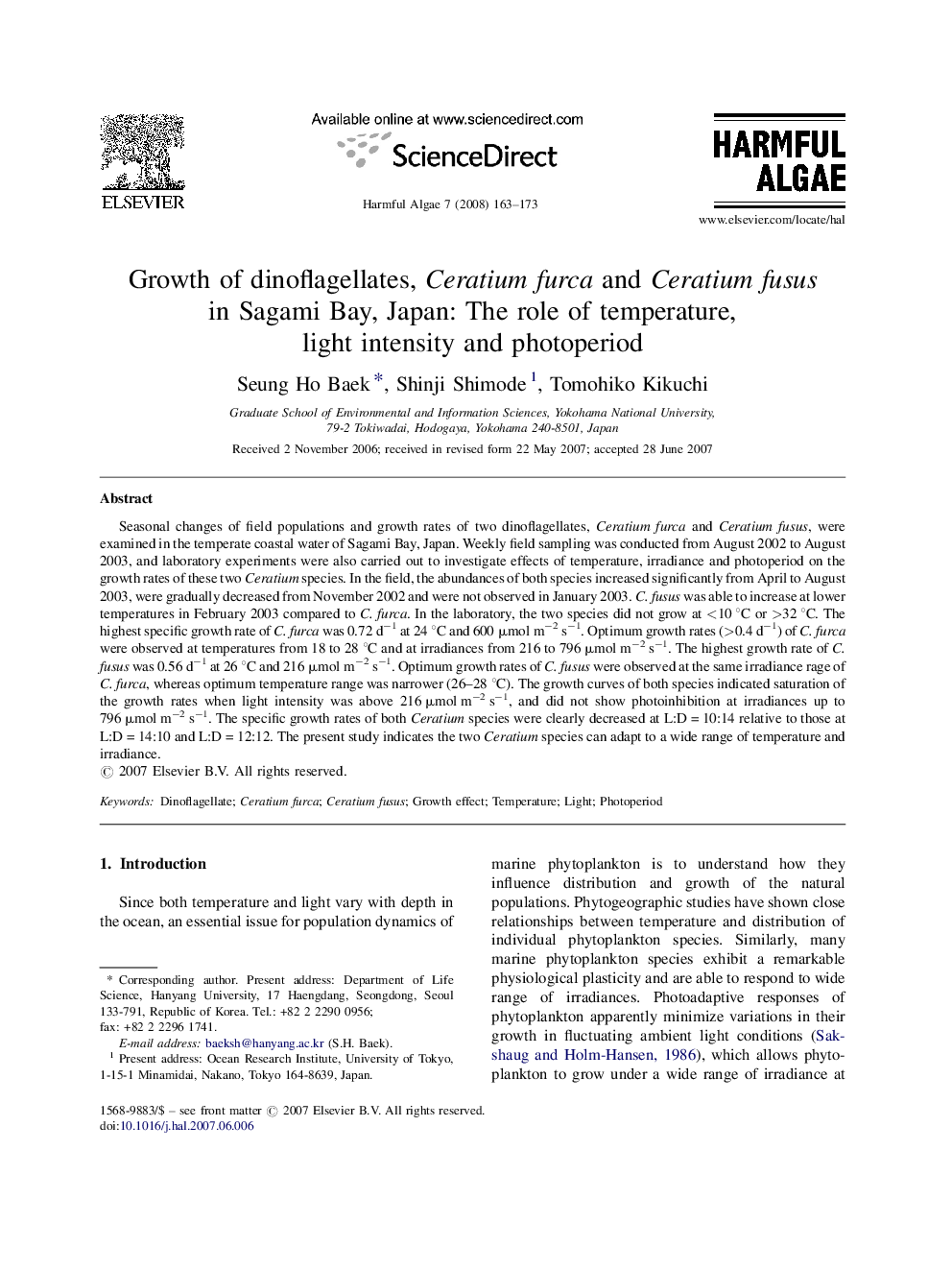| کد مقاله | کد نشریه | سال انتشار | مقاله انگلیسی | نسخه تمام متن |
|---|---|---|---|---|
| 4546142 | 1327490 | 2008 | 11 صفحه PDF | دانلود رایگان |

Seasonal changes of field populations and growth rates of two dinoflagellates, Ceratium furca and Ceratium fusus, were examined in the temperate coastal water of Sagami Bay, Japan. Weekly field sampling was conducted from August 2002 to August 2003, and laboratory experiments were also carried out to investigate effects of temperature, irradiance and photoperiod on the growth rates of these two Ceratium species. In the field, the abundances of both species increased significantly from April to August 2003, were gradually decreased from November 2002 and were not observed in January 2003. C. fusus was able to increase at lower temperatures in February 2003 compared to C. furca. In the laboratory, the two species did not grow at <10 °C or >32 °C. The highest specific growth rate of C. furca was 0.72 d−1 at 24 °C and 600 μmol m−2 s−1. Optimum growth rates (>0.4 d−1) of C. furca were observed at temperatures from 18 to 28 °C and at irradiances from 216 to 796 μmol m−2 s−1. The highest growth rate of C. fusus was 0.56 d−1 at 26 °C and 216 μmol m−2 s−1. Optimum growth rates of C. fusus were observed at the same irradiance rage of C. furca, whereas optimum temperature range was narrower (26–28 °C). The growth curves of both species indicated saturation of the growth rates when light intensity was above 216 μmol m−2 s−1, and did not show photoinhibition at irradiances up to 796 μmol m−2 s−1. The specific growth rates of both Ceratium species were clearly decreased at L:D = 10:14 relative to those at L:D = 14:10 and L:D = 12:12. The present study indicates the two Ceratium species can adapt to a wide range of temperature and irradiance.
Journal: Harmful Algae - Volume 7, Issue 2, February 2008, Pages 163–173